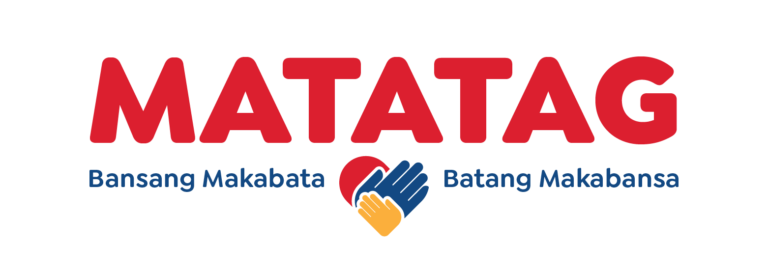
Download the MATATAG Mathematics Curriculum Here
Mathematics plays a pivotal role in identifying, describing, and applying patterns and relationships. It serves as a tool for generalization and communication, offering opportunities for creativity, challenge, and the appreciation of the beauty and power inherent in mathematical processes and reasoning. The successful study of mathematics from Grades 1 to 10 holds paramount significance in preparing Filipino learners for the complexities of life in the 21st century. To actively participate in society, individuals must cultivate a solid foundation of mathematical knowledge, skills, and understanding. This foundation equips them with the ability to make informed decisions and solve problems across a multitude of contexts relevant to their daily lives.
Historically, mathematics emerged out of necessity within human society, with real-world challenges giving rise to its existence, placing problem-solving at its core. Within the educational realm, mathematics serves as an ideal training ground, nurturing learners’ problem-solving capabilities. Moreover, in the era of scientific and technological innovations, being “numerate” holds pivotal importance for engaging in diverse endeavors. The Organisation for Economic Co-operation and Development (OECD) defines numeracy as “the ability to access, use, interpret, and communicate mathematical information and ideas, in order to engage in and manage the mathematics demands of a range of situations in adult life.”
The development of “numeracy,” closely intertwined with problem-solving, constitutes a substantial portion of the Grades 1 to 10 Mathematics curriculum. As learners progress, they become increasingly “numerate,” gaining the confidence and ability to effectively:
- Choose and apply mathematics to address situations in their homes, workplaces, and communities.
- Apply, evaluate, and articulate their mathematical reasoning.
Curriculum Goals
The primary objective of this curriculum is to empower Filipino learners to attain mathematical proficiency and become critical problem solvers. This proficiency encompasses the development of confidence and competence across various mathematical facets and involves recognizing the value and utility of mathematics. According to Polya (1981), problem-solving involves finding solutions to difficulties, circumventing obstacles, and achieving previously unattainable goals. The National Council of Teachers of Mathematics (NCTM) also emphasizes problem-solving as not only a goal but a fundamental means of learning mathematics.
In the realm of mathematics education, problem-solving assumes multiple roles: it is an objective, a process, and a fundamental skill. The problem-solving process encompasses tasks ranging from understanding and recognizing a problem, modeling it through various representations, planning a solution, executing that solution, and finally, verifying its effectiveness. These steps underscore the critical importance of problem-solving as a life skill for 21st-century citizens.
Theoretical and Philosophical Bases
Mathematics is a multifaceted discipline, universally applicable across various fields. Its broad utility in addressing real-world problems necessitates that learners acquire mathematical proficiency and critical thinking skills to effectively tackle such challenges.
Effective mathematics teaching hinges on the educator’s ability to comprehend students’ existing knowledge and learning needs, while simultaneously challenging and supporting their growth. This endeavor demands a deep understanding of both mathematics itself and the learners’ cognitive and pedagogical needs (NCTM, 2000).
Teaching practices endorsed by the NCTM draw inspiration from constructivist perspectives (e.g., Ball & Bass; Confrey, 1991; Gelman, 1994; Smith, diSessa & Roschelle, 1993). Constructivist methods in mathematics education encourage students to transcend rote memorization, develop meaningful contexts, and take an active role in the learning process. These theories underscore active learning, cognitive development through social interaction, and the cultivation of conceptual understanding as vital in mathematics education.
Piaget’s cognitive development theory (1977) posits that all knowledge is constructed, with cognitive structures arising from continuous construction. For elementary school children, concrete objects, images, actions, and symbols are crucial for developing a deep comprehension of mathematical concepts. Similarly, Bruner’s theory aligns with this perspective, emphasizing that conceptual learning commences with active engagement or concrete experiences and progresses through perceptual and abstract representations (Bruner, 1966).
For example, when teaching addition with regrouping (e.g., 8 + 6) to Grade 1 learners, hands-on activities, such as manipulating blocks, help them understand the concept of combining part of one number to make the other number a complete “ten.” This progression from concrete to abstract representation aids learners in grasping numerical concepts. The ultimate objective, as outlined in the Concrete-Representational-Abstract (CRA) Model, is to guide learners toward abstract symbol-based operations (Hui et al., 2017).
Vygotsky (1978) posits that individual development is intricately linked to interactions with the environment, particularly within the zone of proximal development. By integrating this theory into teaching practices, educators can tailor instructional plans to suit various developmental stages. Connecting complex material to familiar concepts, providing scaffolding through social interactions, and aligning instructions with learners’ prior knowledge and thought processes enhances their ability to comprehend new situations, build upon existing knowledge, and transfer learning. In the context of mathematics education, these strategies involve using manipulatives, games, models, partial solutions, and contextual problems based on learners’ interests.
In contrast, Glasersfeld (1987) contends that knowledge is actively constructed by the individual, rather than passively received through the senses. This perspective underscores the importance of learners not only memorizing multiplication facts but also comprehending the underlying concepts. Learners lacking a firm grasp of fundamental concepts may struggle with higher-order thinking.
The use of representations in mathematics serves as a window into learners’ thought processes. Whether concrete or abstract, representations aid in problem analysis, idea formulation, and reasoning extension. The NCTM Standards (2000) emphasize the role of curriculum in teaching learners to create and use representations to organize, record, and communicate mathematical ideas, select, apply, and translate mathematical representations to solve problems, and use representations to model and interpret physical, social, and mathematical phenomena (cited in Fennell & Rowan, 2001).
Curriculum Framework
The framework designed for the revised Mathematics curriculum for Grades 1 to 10 serves as a guiding compass for teachers, facilitating the preparation of mathematically rich lessons and guiding them toward the central curriculum goal. To attain this overarching objective, three facilitating facets have been meticulously developed: content, skills, and disposition. These facets are further reinforced by three supporting components: pedagogy, assessment, and resources, all of which are adapted to the learners’ context, curriculum content, and learning phases.
Through the teaching and learning of the revised curriculum, it is intended that learners embody the qualities emanating from the five intertwining strands of mathematical proficiency, as defined by the National Research Council (NRC, 2001). These strands encompass:
- Conceptual Understanding: Comprehension of mathematical concepts, operations, and relationships.
- Procedural Fluency: Proficiency in executing mathematical procedures flexibly, accurately, efficiently, and appropriately.
- Strategic Competence: The ability to formulate, represent, and solve mathematical problems.
- Adaptive Reasoning: The capacity for logical thought, reflection, explanation, and justification.
- Productive Disposition: A habitual inclination to perceive mathematics as sensible, useful, and worthwhile, coupled with a belief in diligence and one’s own efficacy.
These intertwined strands of mathematical proficiency align with the SEAMEO Basic Education Standards (SEABES): Common Core Regional Learning Standards (CCRLS) in Mathematics and Science (2017), which underscore:
- Cultivating basic human characteristics through mathematical values, attitudes, and habits of mind.
- Developing creative human capital and process skills.
- Recognizing the importance of mathematical knowledge in cultivating well-qualified citizens.
Facione and Gittens (2016) define critical thinking as “the process of purposeful, reflective judgment.” They further assert that “the critical thinking process applies cognitive skills of interpretation, analysis, inference, evaluation, explanation, and self-regulation in an effort to judge what to believe or what to do.”
The revised Mathematics curriculum endeavors to foster critical thinking among learners, rooted in a strong conceptual foundation, strategic utilization of mathematical skills and processes, and the cultivation of valuable values and dispositions toward mathematics. This approach aims to equip learners to become productive and successful 21st-century citizens.
The Facilitating Facets
The three facilitating facets essential for achieving the curriculum goal in the Grades 1 to 10 Mathematics curriculum are content, skills, and disposition.
Content
To become proficient problem solvers, learners must acquire robust mathematical knowledge and understanding. Lessons that are logically structured and interconnected enable students to delve deep into mathematical concepts.
The revised curriculum for mathematics will encompass three content domains:
- Number and Algebra
- Measurement and Geometry
- Data and Probability
Skills
As adept problem solvers, learners need to possess a range of mathematical skills. These skills enhance their ability to analyze and evaluate mathematical situations and derive solutions to real-world problems. In today’s highly technological world, the teaching and learning of mathematics must go beyond mere calculations and algorithmic procedures. This is because such calculations and procedures can now be carried out by calculators and software applications.
Disposition
Disposition closely relates to attitude and value. Values represent the guiding principles that influence decision-making in private and public life, while attitudes, grounded in values and beliefs, shape behavior. Mathematical disposition also encompasses the appreciation of intrinsic mathematical values, such as coherence, precision, and generality.
A strong mathematical disposition fosters genuine learning and the development of the mathematical proficiency required for effective and successful problem-solving.
The Supporting Components
The three components designed to support the facilitating facets in achieving the curriculum goal for the Grades 1 to 10 Mathematics curriculum are pedagogy, assessment, and resources.
Pedagogy
Pedagogy involves the methods employed to deliver the curriculum. The quality of mathematics learning hinges on the effectiveness of the various learning experiences used to engage and instruct learners.
Assessment
Assessment complements pedagogical approaches and is a critical aspect of curriculum implementation in mathematics. Given that the curriculum goal centers on developing mathematical proficiency, critical thinking, and problem-solving skills, the assessment process should not only record learners’ achievements in understanding concepts and solving mathematical problems but also provide valuable feedback for improving instruction. Assessments, whether formative or summative, should take various forms.
Resources
The learning of mathematics necessitates a diverse range of teaching and learning resources. Electronic and print resources must be thoughtfully selected and judiciously employed. Additionally, teachers and other instructional leaders are recognized as key resources in the curriculum implementation process.
Download the MATATAG Math Curriculum Here
Matatag Curriculum Guide

Kindergarten CG 2023

Reading and Literacy CG 2023

English CG 2023

Araling Panlipunan CG 2023

Filipino Kurikulum CG 2023

GMRC and VE CG 2023

Language CG 2023

Makabansa CG 2023

EPP TLE CG 2023

Mathematics CG 2023

Music and Arts CG 2023

PE and Health CG 2023

